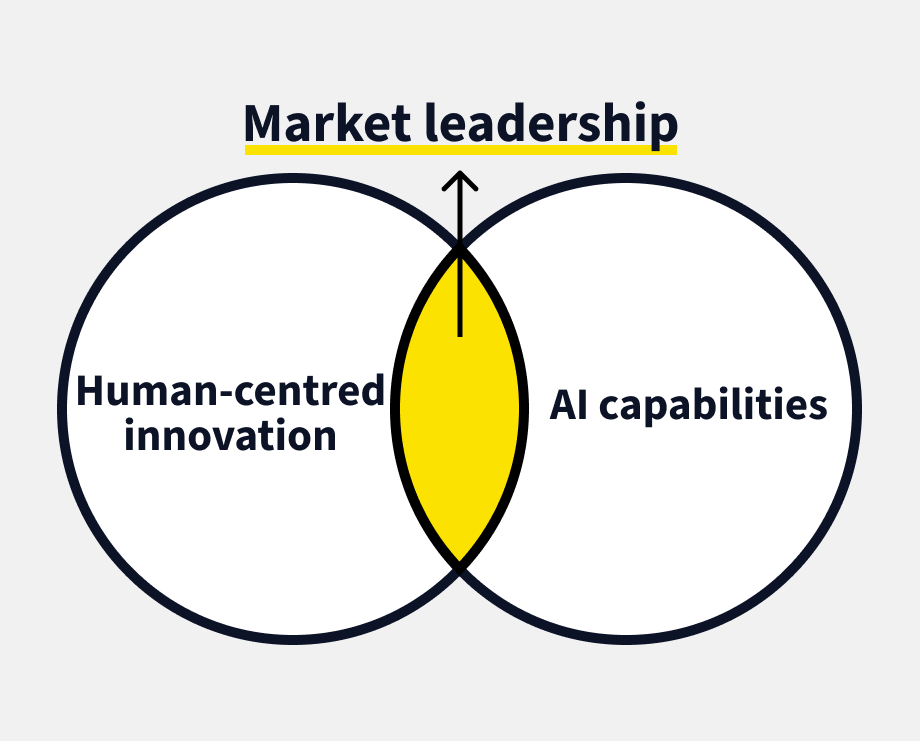The changing competitive landscape
The competitive environment for digital products and platforms is undergoing a profound shift with the rise of AI-driven tools. Technologies such as vibe coding, where AI can design, code, and deploy applications based on high-level prompts or “vibes”, are drastically lowering the barriers to entry.
Traditionally, building a viable digital product required significant investment in engineering talent, thoughtful UX design, robust security, and long-term maintenance. Today, with AI automating many aspects of these processes, more entrants can launch products with limited resources.
Most of these entrants won’t survive long. Many products will be of low quality, lack scalability, or fail due to weak security and compliance issues. Some will gain short-term traction but collapse when they are unable to maintain the software or sustain growth. However, a small number will succeed, offering products at a much lower price point and competing directly with established players. For product leaders, this means increased price pressure, accelerated innovation speed, and changes in customer behaviour.
Rapid product imitation
One of the most immediate consequences of lower entry barriers is the rapid imitation of products. When it’s easy to build digital products, new entrants can replicate your features and interfaces almost overnight.
This happens because AI accelerates the process of identifying and replicating proven design patterns, user flows, and code structures. Competitors no longer need to invest in original research or innovation; they can simply observe what works and copy it. As a result, features become commoditised, and the market becomes flooded with similar-looking solutions.
Where real differentiation comes from
For many years, features have not been the primary differentiator in digital products. Competitors can (and will) copy features quickly, and AI will only accelerate this trend. What truly sets products apart is a combination of deeper, harder-to-replicate factors.
The first is the value your product creates for customers: How well it meets (and exceeds) their expectations, the trust they place in your brand, and your ability to innovate in ways that solve their real problems. This comes not from copying others, but from discovering insights about your customers and translating those into meaningful improvements.
The second is your market reach. Two products might have similar features, but the one with stronger go-to-market channels, broader distribution, and a trusted brand will win. Reach is about being where your customers are and scaling your presence faster than competitors can.
Finally, there’s the network effect. This is when the value of your product grows as more people participate in the ecosystem around it. The most well-known form is on the customer side: social platforms, marketplaces, and collaboration tools become more valuable as more users join, because every new participant enhances the experience for everyone else. But network effects aren’t limited to customers alone. In many digital products, the network of suppliers, partners, or complementary services is just as important. For example, app marketplaces thrive because more developers (suppliers) create more value for users, which in turn attracts more users, who also attract more developers — a reinforcing cycle. Similarly, platforms that connect buyers and sellers benefit from both sides of the market feeding into each other. Once these network effects take hold, whether through users, suppliers, or both, they create a powerful moat. Even if competitors replicate your features, they struggle to replicate the strength of your ecosystem and the relationships that sustain it.
In other words, long-term advantage in digital products doesn’t come from what your product does, but from how well it serves customers, how far it can reach, and the ecosystem it builds around itself.
Adapting to a new environment
In a world where products can be copied overnight, the true differentiators are brand, trust, ecosystem, and customer insight.
Product leaders must continually scan the market, assess emerging threats, and adjust their strategies accordingly. This starts with your customers:
Are customers', users' and buyers' behaviours changing?
How do they perceive the new entrants?
What emerging needs are still unmet?
Only with this grounding can you revise your strategy effectively.
How to remain competitive
Remaining competitive in this new environment isn’t about reacting to every AI trend or buzzword. It’s about making strategic decisions that balance short-term adaptation with long-term direction.
1. Keep to your core
Anchor every decision to your mission (why your business exists) and vision (where you want to get to). This ensures you don’t get distracted by chasing shiny new technologies that don’t actually serve your purpose.
2. Analyse your position
Reflect on what has contributed to your business's success so far, and assess where external risks could potentially threaten your position. Start by conducting market research to understand emerging trends and shifts in your industry. AI tools, such as ChatGPT, can support this analysis by synthesising industry reports and competitor moves, providing you with faster access to insights.
Then, apply Porter’s Five Forces to assess threats and opportunities in your environment:
Industry rivalry: As more competitors crowd the space, rivalry increases, often leading to price wars and commoditisation.
Threat of new entrants: How easy it is for competitors to enter your market (AI makes this much easier).
Threat of substitutes: The risk of other solutions solving the same customer problem differently.
Power of buyers: Customers now have more choices, driving down prices and raising expectations.
Power of suppliers: Consider dependencies on technology providers, APIs, or platforms that could shift costs or control.
3. Listen deeply to customers, buyers and users
The most resilient businesses are those that understand their customers better than anyone else. This means going beyond surface-level feedback. Conduct qualitative research (interviews, ethnographic studies, usability testing) to uncover behaviours and motivations, and quantitative research (surveys, analytics, behavioural data) to validate patterns at scale.
Pair this with industry trend analysis to understand how customer behaviours are evolving in response to new technologies and competitive pressures. This ensures your strategy is grounded in real needs, not hype.
4. Adapt your strategy
When the environment is volatile and fast-moving, a rigid strategy won’t work. This is where the BCG strategy palette is useful. It outlines four different strategy types businesses can adopt depending on their environment:
Classical strategy: Best when markets are stable and predictable.
Adaptive: Ideal for markets that are uncertain and constantly evolving, such as digital product businesses.
Visionary: Best when entirely new markets are being created.
Shaping: Best when you can influence an ecosystem or industry.
For digital products, an adaptive strategy is often the most effective approach. It emphasises experimentation, rapid iteration, and constant learning, allowing you to pivot as market conditions change. However, depending on your goals and industry stage, other strategies from the palette may also be relevant
5. Implement your strategy in phases
Execution is as important as strategy. Break down implementation into phases that reflect your current priorities:
Cash phase – stabilise finances to ensure survival.
Value phase – enhance the value delivered to customers through improvements in experience, features, or service.
Growth phase – scale sustainably and expand into new markets or segments.
A useful tool in this context is the Value Chain analysis. This involves mapping out all the activities that go into creating and delivering your product — from research and development to operations and customer support. By analysing the value chain, you can identify where to reduce costs, where to add value, and where to innovate. This ensures your strategy translates into meaningful action across the business.
Shaping your strategy with Fruto
AI and vibe coding will reshape the product landscape. The barrier to entry will fall, rapid product imitation will rise, and competition will intensify. But this doesn’t mean established players are doomed. The businesses that thrive will be those that stay true to their core, adapt strategically, and execute with discipline.
At Fruto, we’ve worked with many product-led businesses to shape strategies that cut through hype and focus on what drives long-term success. If you want to explore how your business can stay ahead in the age of AI, we’d love to help. Get in touch!





